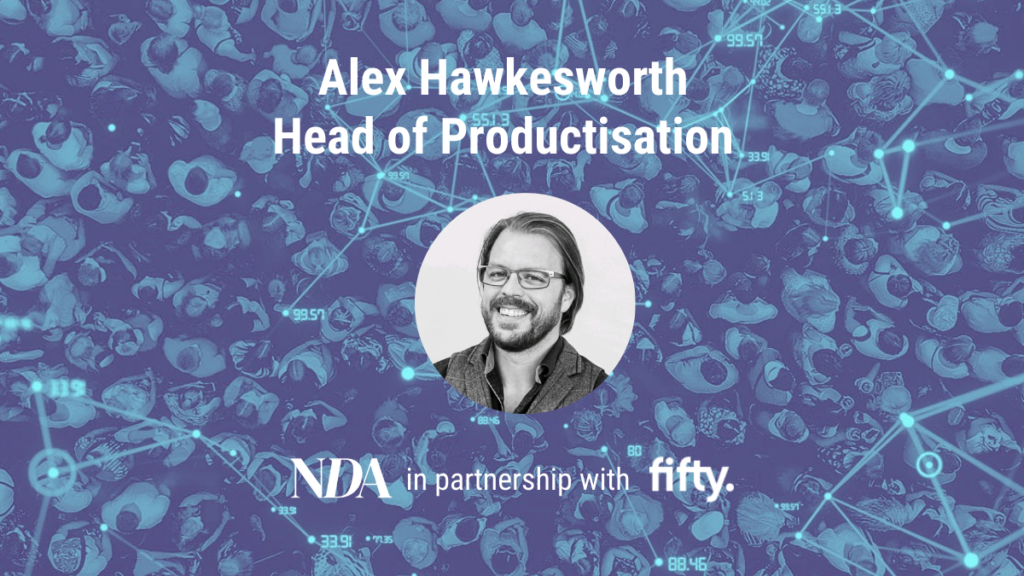NDA has partnered with Fifty on a series of articles exploring the cookieless future of marketing to find out how advertisers can prepare.
Alex Hawkesworth, Head of Productisation at Fifty, explains why it’s time for marketers to think differently about audience targeting.
Why do marketers need a new approach to targeting customers online?
Regulatory and industry changes, driven by concerns around consumer privacy, mean that a large section of online consumers are no longer addressable on browsers such as Firefox, Safari and Apple’s iOS 14.5 – and this is soon set to expand to all other major browsers (Chrome etc) at the end of 2022.
The issue for brands is that many of the most valuable consumers for brands exist on those ecosystems, browsing websites and making conversions, but those aren’t currently being measured due to cookie blocking. This, in turn, leads to a detrimental situation for brand marketers as activation (media buying) platforms tend to optimise ad budgets away from those environments and lose out on those valuable consumers – who would still see and engage with campaigns, even if passing back no measurement.
At Fifty, we’ve solved that problem in a unique way. We’re not reliant on any form of cookie or digital IDs. Our approach is based on understanding humans and their digital footprint, and building a map of the online pages they are likely to be on. We’re not limited to any technological environment, so we have the ability to go to all of these activation platforms, agencies, brands and publishers and say, hey, let’s start reaching these really valuable people that you aren’t reaching at the moment.
What is so unique about Fifty’s approach?
At Fifty, we’ve created a product that sits between ‘contextual’ solutions and the ‘first party’ space. We leverage privacy-compliant social data to deliver the scale that is lacking from first party data, but we also bring the ability to model and understand an audience before we look at online content, which sits above that contextual space in accuracy.
This means Fifty’s approach to audience modelling and targeting can be used to bolster and support the data you already have and act as a proxy for the data you don’t have. Likewise, by understanding your target audience in detail before we look at content, you can be much more precise and efficient with programmatic campaign delivery as well as design better creative that truly resonates with your target audiences.
How does this approach improve contextual campaigns?
We are changing the paradigm for brand advertisers to a certain extent, because we’re delivering a third-party audience functionality that will survive beyond the demise of the cookie and, what’s more, we’re presenting that in a contextual space. By understanding consumers and the massive amount of data they share across social platforms, we’re able to understand the topics and categories that define and motivate different groups of people, based on how they’re clustered around key interests and movements.
What sets our approach apart is that we use the social data to curate the contextually relevant domains that real people are interacting with to avoid low quality inventory and we aren’t limited to advertising to the pages that are directly topical for campaign, e.g. jogging articles for running shoe ads.
By fully understanding the many facets of an audience, their secondary interests and all the other places that they are likely to be online, we’re able to also deliver advertising in those contexts as well. We’re also able to track how audience conversations and passion points dynamically change and evolve in real time and update targeting on a daily cadence, rather than base media buying decisions on ID-based consumer data from up to a year ago.
In what way is the Fifty approach ‘future-proofed’?
In the short term, our ID-free audience targeting means that we are fully ‘future proofed’ against the deprecation of the cookie and any further privacy restrictions that we might see in a similar vein.
In a longer term sense, by rooting our approach to targeting in our understanding of humans and where they are online, we’re ‘future-proofed’ in the sense that we’re able to adapt to any current and emerging channels. All media channels are essentially content delivery systems. From a consumer point of view, the channel is largely irrelevant; they are there to consume the content that motivates them, whether that’s in the form of a webpage, a podcast, a mobile game or a CTV show.
We welcome new channels, as our approach to targeting is just as relevant to things like AR and mixed reality as it is to a conventional web page. I think those will be exceptionally interesting new frontiers for us to provide addressability for.









